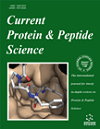
Full text loading...
We use cookies to track usage and preferences.I Understand
The Q108P pathological variant of the mitochondrial Coiled-Coil-Helix-Coiled-Coil-Helix Domain-Containing Protein 10 (CHCHD10) has been implicated in amyotrophic lateral sclerosis (ALS). Both the wild-type and CHCHD10Q108P proteins exhibit intrinsically disordered regions, posing challenges for structural studies with conventional experimental tools.
This study presents the foundational characterization of the structural features of CHCHD10Q108P and compares them with those of the wild-type counterpart. We conducted multiple run molecular dynamics simulations and bioinformatics analyses.
Our findings reveal distinct differences in structural properties, free energy surfaces, and the outputs of principal component analysis between these two proteins. These results contribute significantly to the comprehension of CHCHD10 and its Q108P variant in terms of pathology, biochemistry, and structural biology.
The reported structural properties hold promise for informing the development of more effective treatments for ALS.

Article metrics loading...

Full text loading...
References


Data & Media loading...
Supplements

